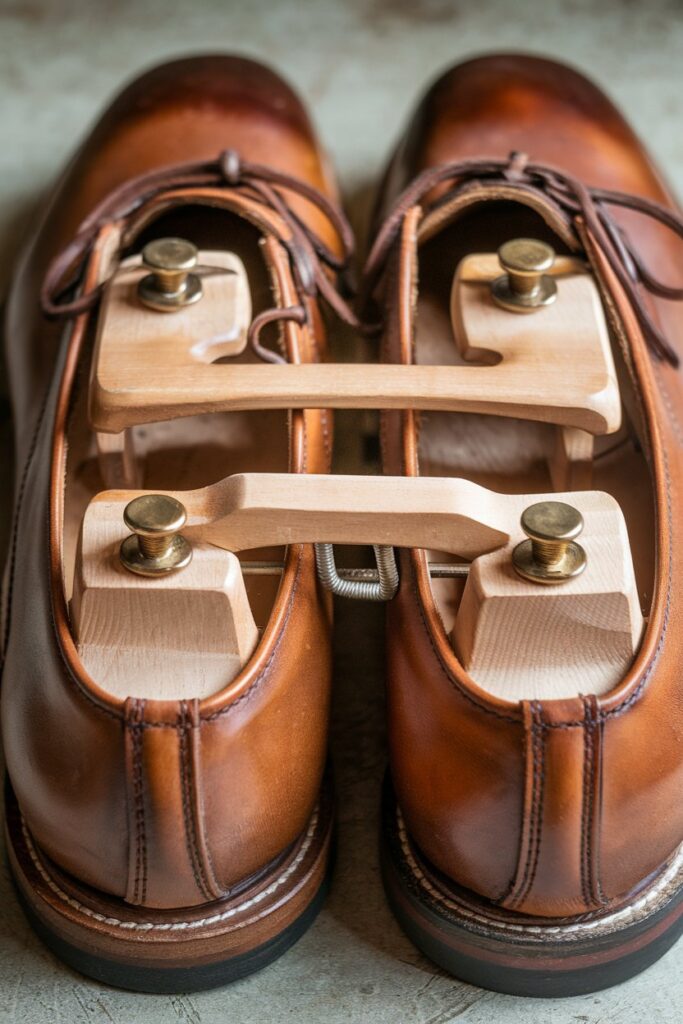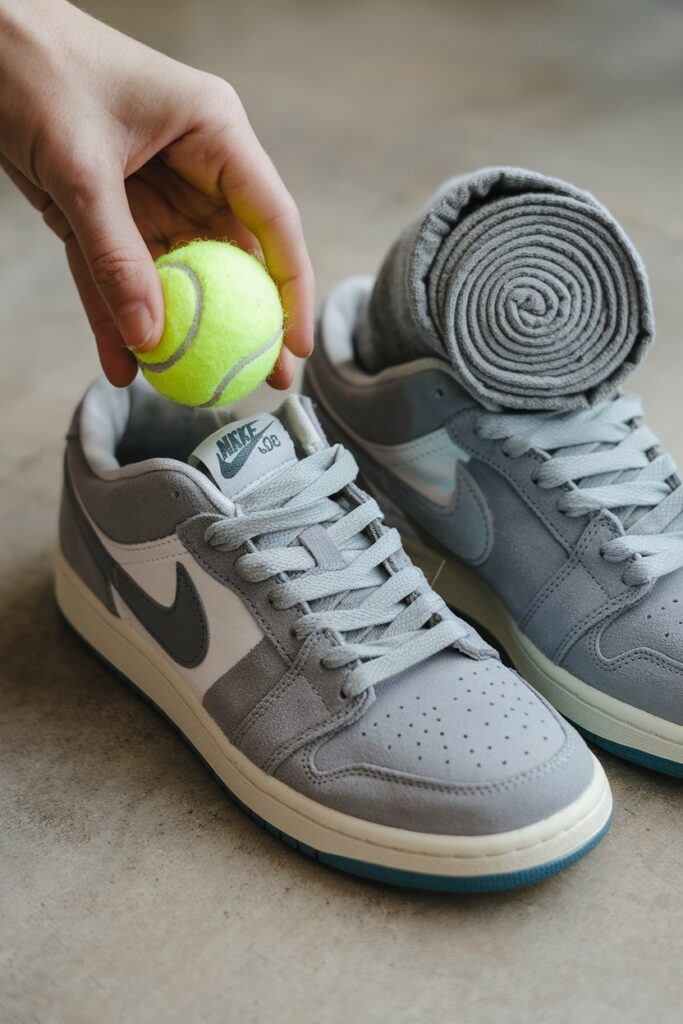Wearing shoes that are too tight can lead to discomfort, blisters, and long-term foot issues. Below is a comprehensive guide with detailed instructions to help you stretch your shoes safely and effectively.
1. Use a Shoe Stretcher for Professional-Grade Results
Shoe stretchers are the most reliable tool to adjust shoe size by expanding length and width.
- Types of Shoe Stretchers:
- One-Way Stretcher: Adjusts width or length only.
- Two-Way Stretcher: Simultaneously stretches width and length.
- Specialized Stretcher: Includes bunion plugs for targeted areas.
- How to Use:
- Insert the stretcher into your shoe.
- Turn the handle to apply pressure.
- Leave it inside the shoe for 6–12 hours.
- Check the fit and repeat if necessary.
- Best for: Leather, suede, and canvas shoes.
- Pro Tip: Apply a stretch spray beforehand to loosen the material, making the stretching process easier and more effective.

2. Use Thick Socks and Heat for Quick Stretching
Thick socks combined with heat can expand shoes by softening and stretching the material.
- Steps:
- Wear thick or multiple socks to increase foot volume.
- Put on the tight shoes.
- Use a hairdryer on medium heat, focusing on tight areas for 30 seconds at a time.
- Move your feet inside the shoes to stretch them while the material is warm.
- Let the shoes cool down while wearing them to retain the new shape.
- Best for: Leather, synthetic, and canvas shoes.
- Caution: Keep the hairdryer at least 6 inches away to avoid burning or warping the material.

3. Freeze Shoes with Water for Natural Expansion
Water expands when frozen, making it a simple and effective way to stretch shoes.
- Steps:
- Fill a resealable plastic bag halfway with water and seal tightly.
- Place the bag inside the shoe, ensuring it fills the tight areas.
- Put the shoes in the freezer overnight.
- Remove the frozen water bags and let the shoes thaw for 20 minutes.
- Test the fit and repeat if necessary.
- Best for: Sneakers, canvas, and casual shoes.
- Pro Tip: Use double-layered bags to prevent leaks and protect your shoes from water damage.

4. Apply Stretch Spray to Loosen Materia
Stretch sprays soften shoe material, making it easier to stretch the shoes with other methods.
- How to Use:
- Lightly spray the inside and outside of the shoe.
- Focus on tight areas like the toe box or sides.
- Wear the shoes immediately or use a shoe stretcher for better results.
- Best for: Leather, suede, and synthetic shoes.
- Pro Tip: Always test the spray on a small, hidden area to ensure it doesn’t discolor or damage the material.

5. Stuff Shoes with Wet Newspaper for Gentle Stretching
Wet newspaper expands as it dries, gently stretching shoes over time.
- Steps:
- Soak newspaper in water and wring it out until damp.
- Stuff the shoes tightly with the damp newspaper.
- Ensure the shoes are packed evenly to maintain their shape.
- Leave them to dry naturally in a cool area.
- Best for: Canvas and fabric shoes.
- Pro Tip: Avoid direct sunlight or heat sources to prevent the shoes from warping or shrinking.

6. Stretch Shoes with Tennis Balls or Socks
Tennis balls or tightly rolled socks can be used as shoe stretchers for a cost-effective, DIY approach.
- Steps:
- Roll up socks tightly or use tennis balls.
- Insert them into the shoe’s tight areas, such as the toe box.
- Leave the shoe stuffed for several hours or overnight.
- Best for: Sneakers, boots, and loafers.
- Pro Tip: Combine this method with a stretch spray for better results.

7. Try Professional Stretching Services
Cobblers and professional shoe repair shops have specialized tools and techniques for shoe stretching.
- Services Provided:
- Using mechanical stretchers for precise adjustments.
- Applying industrial-grade sprays or softeners.
- Reshaping shoes for bunions or other specific needs.
- Best for: Expensive or delicate shoes, including leather and designer footwear.
- Cost: Typically ranges from $15 to $50, depending on the work needed.
- Pro Tip: Seek a cobbler with expertise in your specific shoe material for the best results.

8. Stretch Shoes with Damp Socks
Damp socks expand shoes naturally, especially if worn during the stretching process.
- Steps:
- Soak a pair of socks in warm water and wring them out until damp.
- Wear the damp socks with the tight shoes.
- Walk around the house for 20–30 minutes to mold the shoes to your feet.
- Best for: Leather and synthetic shoes.
- Caution: Allow the shoes to dry properly afterward to prevent odor or mildew.

9. Use Adjustable Elastic Stretch Bands
Elastic stretch bands apply consistent pressure to expand shoes over time.
- Steps:
- Attach the bands inside the shoes, focusing on the areas you want to stretch.
- Adjust the tension to apply the desired level of pressure.
- Leave the bands in place for several hours or overnight.
- Best for: Flats, loafers, and other closed-toe shoes.
- Pro Tip: Combine with a stretch spray to speed up the process.
Additional Tips for Safe and Effective Shoe Stretching
- Understand Material Limits: Leather and canvas are flexible, but synthetic materials may not stretch significantly.
- Use Protective Measures: Always test sprays or heat methods on a hidden part of the shoe.
- Combine Methods: For stubborn shoes, use multiple techniques, such as a stretch spray with a shoe stretcher.
- Avoid Overstretching: Stretching shoes too much can weaken the material or alter their shape.
- Invest in Tools: Purchasing a quality shoe stretcher can save you time and money in the long run.
By following these 9 detailed methods, you can comfortably expand your shoes to fit perfectly, enhancing both their usability and your comfort.



Leave a Reply